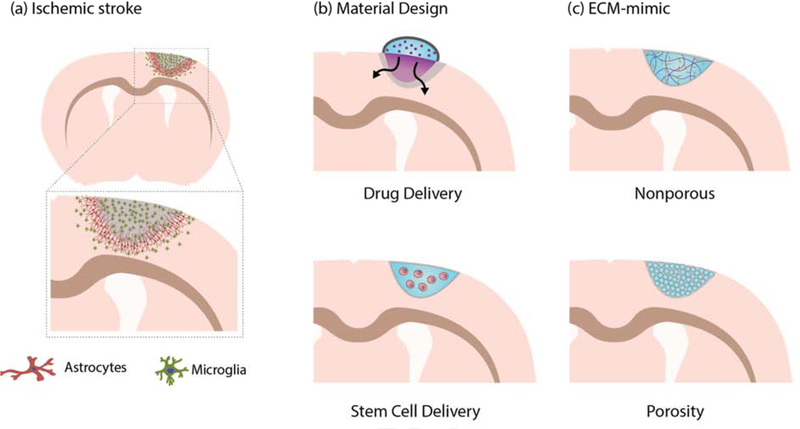Figure 1.
Overview of ischemic stroke and materials for brain repair after stroke. (a) showing ischemic stroke pathophysiology in the form of a coronal section anterior to the bregma, specifically highlighting astrogliosis and neuroinflammation as shown by astrocyte scarring and increase in microglia, respectively. (b) Materials can be used as a vehicle in conjunction with other therapeutics to sustain local delivery of drugs (i.e. small molecules and proteins) or support stem cell transplant survival. (c) In addition to employing materials as vehicles, materials can also present instructive cues as an extracellular matrix (ECM) analog. Materials can be engineered to be nonporous or porous to elicit desired cellular and tissue response.

